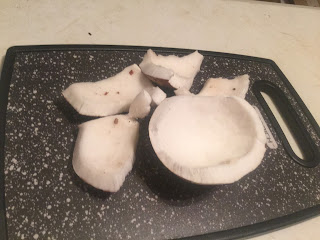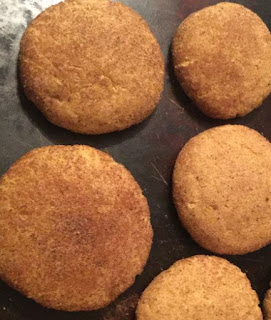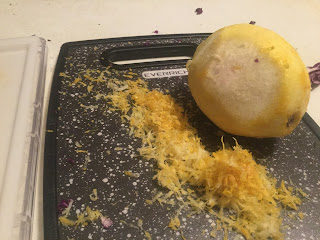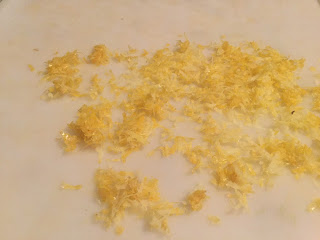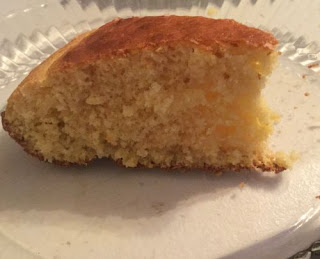We love to have coconut on hand and one way to ensure you have coconut all year long is by dehydrating it from fresh coconuts. Dehydrated coconut stores so much longer than fresh coconut and goes great into baked goods, such as cakes and cookies.
Coconuts also provide a great source of fiber and also contain a good source of protein and folate, as well as Vitamins A & E. It tastes good and adds a nice texture to foods. Coconuts are considered the superhuman food of the food pyramid world. Eating coconut on a regular basis can have very positive effects on your overall health.
To get the coconut "meat" out, you first have to open the coconut. To do so, first hammer a 10 penny nail through each one of the coconuts "eyes".
Then drain the liquid out. You can drain it into a bowl and drink it or give it to your chickens. They love it as much as humans do.
Now using a hammer, hit the coconut a few choice times and it should crack open and you can now pry out the meat.
Once all the "meat" is out, I used a cheese shredder to very carefully shred it.
Now just place the coconut on your dehydrator tray at 135 degrees and dehydrate for about 8 hours . If you want your coconut sweetened, just sprinkle some sugar on it before dehydrating it. Once dried store in a sealed mason jar until you are ready to use it. I have stored it up to 2 months with no problems. I am sure it would last longer than this but only have experience up to 2 months. We enjoy it too much.
It makes a great snack straight out of the jar or you can add it into any recipe or add it into a homemade trail mix. It is also awesome sprinkled onto ice cream or a salad.
Coconuts also provide a great source of fiber and also contain a good source of protein and folate, as well as Vitamins A & E. It tastes good and adds a nice texture to foods. Coconuts are considered the superhuman food of the food pyramid world. Eating coconut on a regular basis can have very positive effects on your overall health.
To get the coconut "meat" out, you first have to open the coconut. To do so, first hammer a 10 penny nail through each one of the coconuts "eyes".
Then drain the liquid out. You can drain it into a bowl and drink it or give it to your chickens. They love it as much as humans do.
Now using a hammer, hit the coconut a few choice times and it should crack open and you can now pry out the meat.
Once all the "meat" is out, I used a cheese shredder to very carefully shred it.
Now just place the coconut on your dehydrator tray at 135 degrees and dehydrate for about 8 hours . If you want your coconut sweetened, just sprinkle some sugar on it before dehydrating it. Once dried store in a sealed mason jar until you are ready to use it. I have stored it up to 2 months with no problems. I am sure it would last longer than this but only have experience up to 2 months. We enjoy it too much.
It makes a great snack straight out of the jar or you can add it into any recipe or add it into a homemade trail mix. It is also awesome sprinkled onto ice cream or a salad.
Follow us on g+



